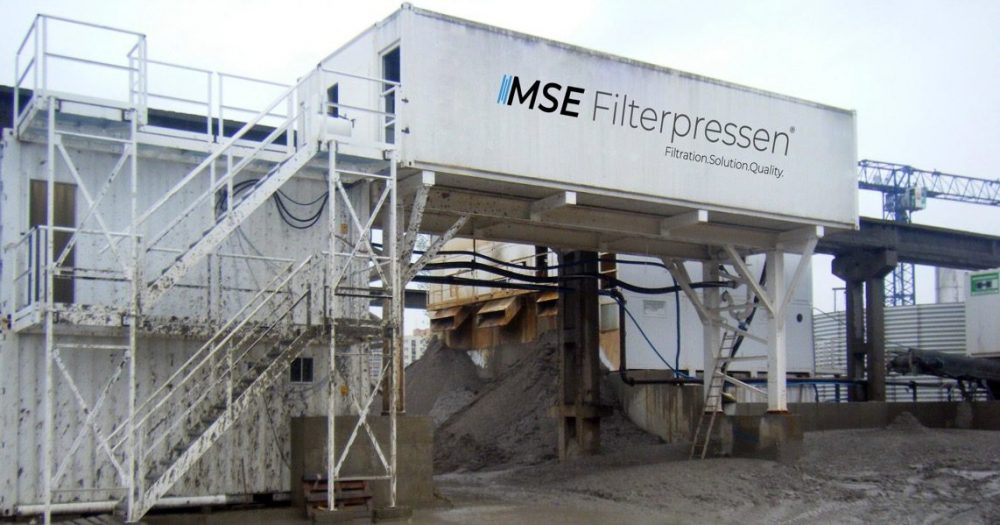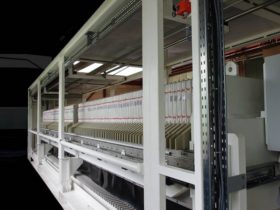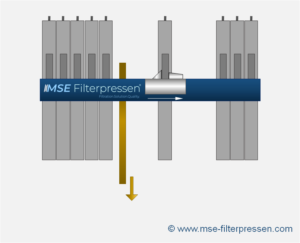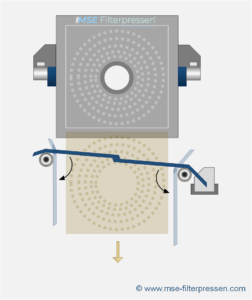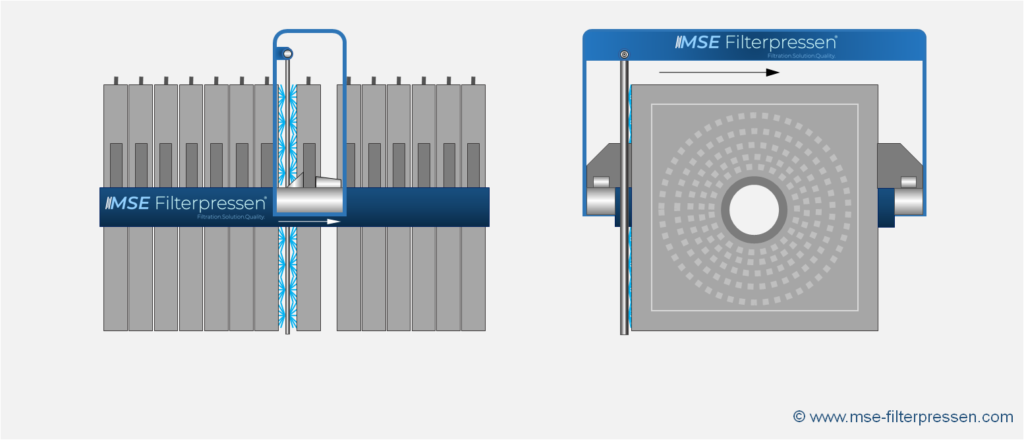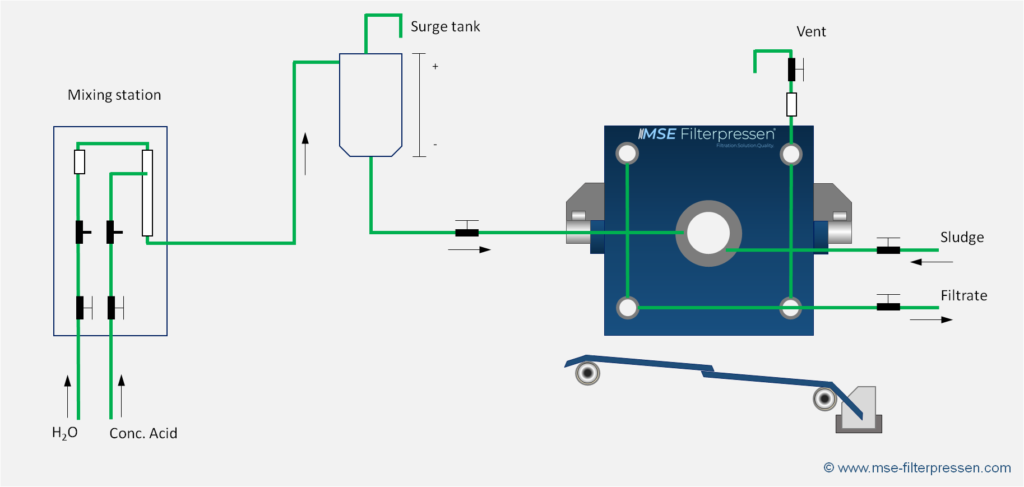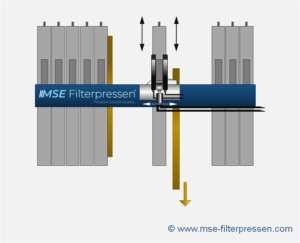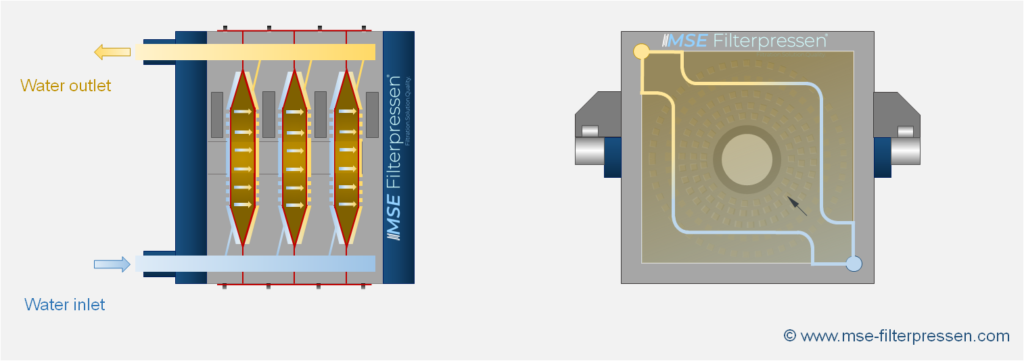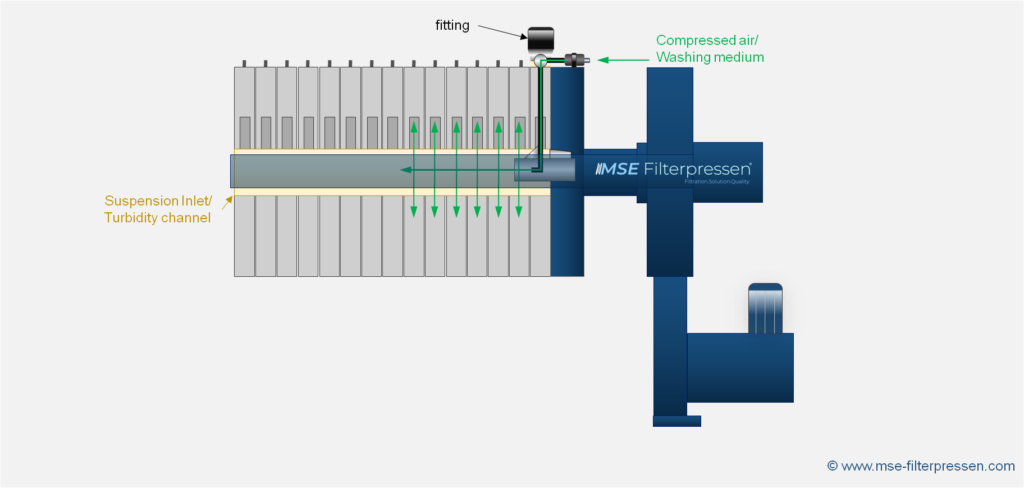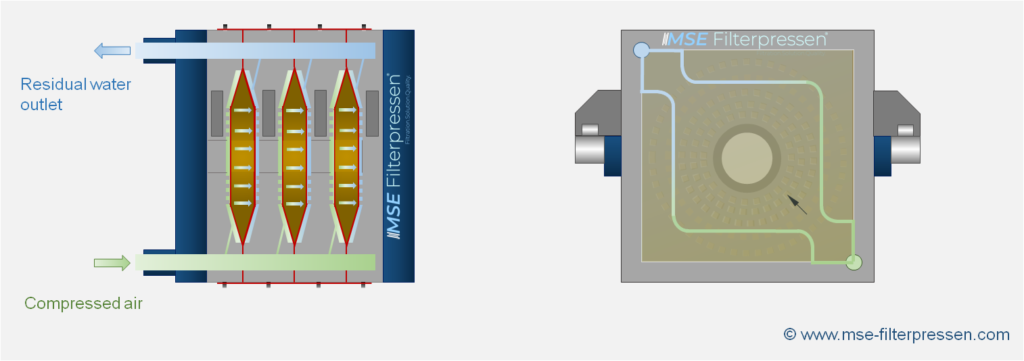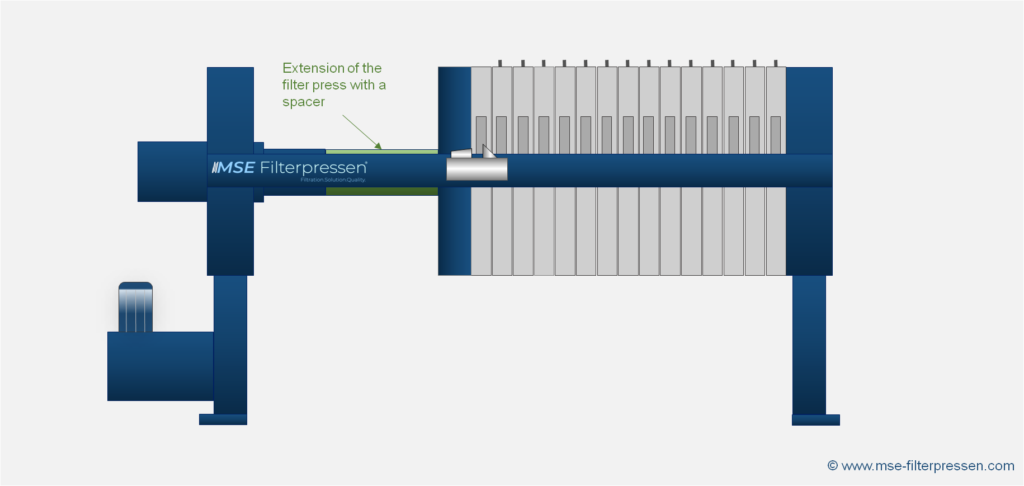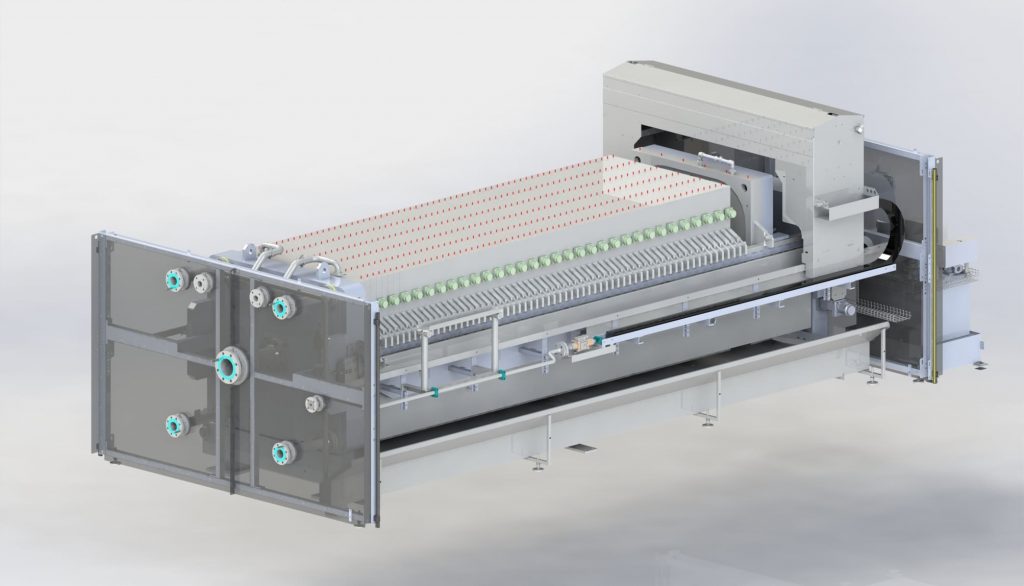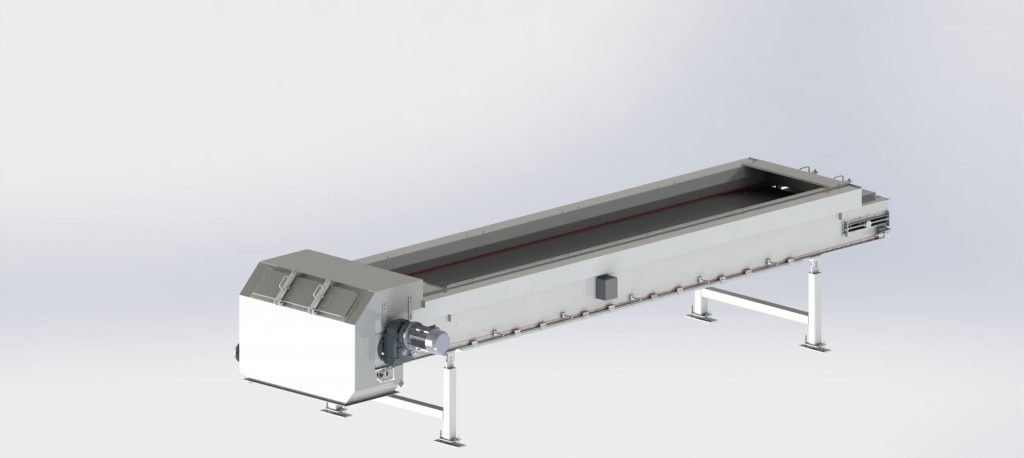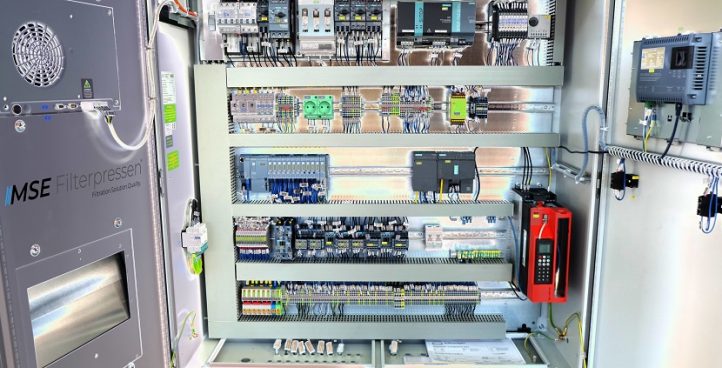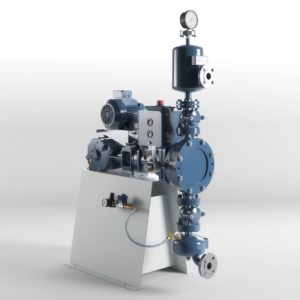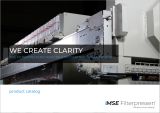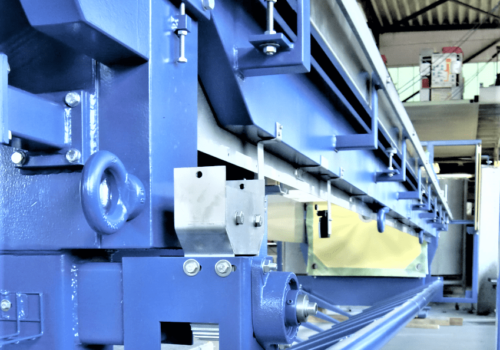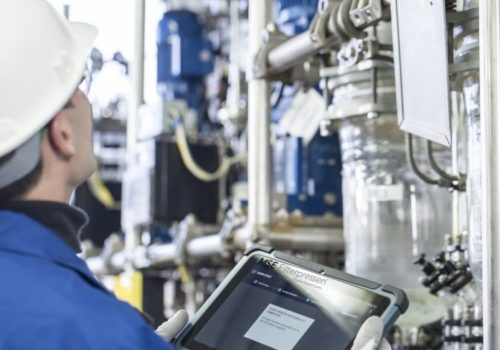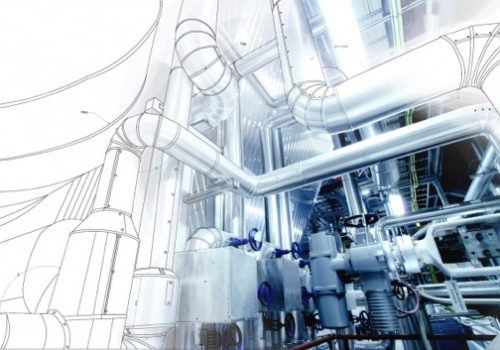Especially in rapidly changing markets, it is all the more important to rely on a partner with many years of market and expert knowledge. With semi-mobile container plants – similar to mobile filter presses – we support you in defying the rapid changes on the market in order not to jeopardise your core business. Semi-mobile filter presses can be used flexibly and are also quickly ready for operation. Especially for temporary projects, the required container plant can be made available in an uncomplicated manner. Wherever construction progress requires it. Furthermore, the semi-mobile filter press is fully equipped and immediately ready for operation after connecting to sludge, water and power supply. MSE Filterpressen® plans and manufactures the plants for individual customer requirements. In this way, the best possible result can be achieved for every task.
TECHNOLOGY OF SEMI-MOBILE FILTER PRESSES
The semi-mobile filter press from MSE is available in various designs. Chamber filter presses or membrane filter presses (with 16 bar or 25 bar operating pressure) are optionally available and depending on the application, the appropriate feed pump. The sizes of the semi-mobile filter presses are available up to a maximum size of 1500 format. This corresponds to about 100 chambers, i.e. about three cubic meters of chamber volume. The conditioning of the sludge is mainly carried out with polyelectrolytic flocculants (PE) analogue to the mobile filter press. Further methods are lime/iron conditioning and dosing of solid filter aids. The plants are therefore equipped with suction and pressure-side inline mixers. The PLC plant controls the conditioning parameters in proportion to pressure and/or volume. All filter press plants are equipped here with the necessary equipment such as sludge feed, polymer preparation plant, screw conveyor for cake transport, etc. One operator is sufficient to operate a semi-mobile filter press. The operator’s tasks are limited to monitoring the plant and unloading the filter press after each batch.
PRACTICAL EXAMPLES FOR THE SUCCESSFUL COMMISSIONING OF SEMI-MOBILE MSE FILTER PRESS PLANTS
1) FILTER CONCRETE SLURRIES WITH A SEMI-MOBILE FILTER PRESS
In the production of concrete pavement slabs, for example, meticulous cleaning of the production facilities after each batch is extremely important. For the treatment of cleaning water, which still contains a high proportion of active concrete, a container plant was designed which treats and dewaters concrete slurries without operator interaction. A hose pump ensures the best dewatering results. In the event of malfunctions, equipment has been developed to prevent the concrete from setting or hardening in the plant. Automatic rinsing and cleaning processes also ensure consistently good dewatering results.
2) GROUNDWATER CLEANING WITH SEMI-MOBILE FILTER PRESSES
To clean contaminated ground water, hundreds of m³ of water are treated by adding lime every day. The pollutants are accordingly bound in the lime after the treatment. At the end of the process, the resulting suspension is transferred to a fully automatic membrane filter press where it is dewatered. The plant can be self-sufficient on the premises and runs in continuous operation with only one weekly inspection by the maintenance personnel. Automatic rinsing and cleaning processes also ensure consistently good dewatering results.


